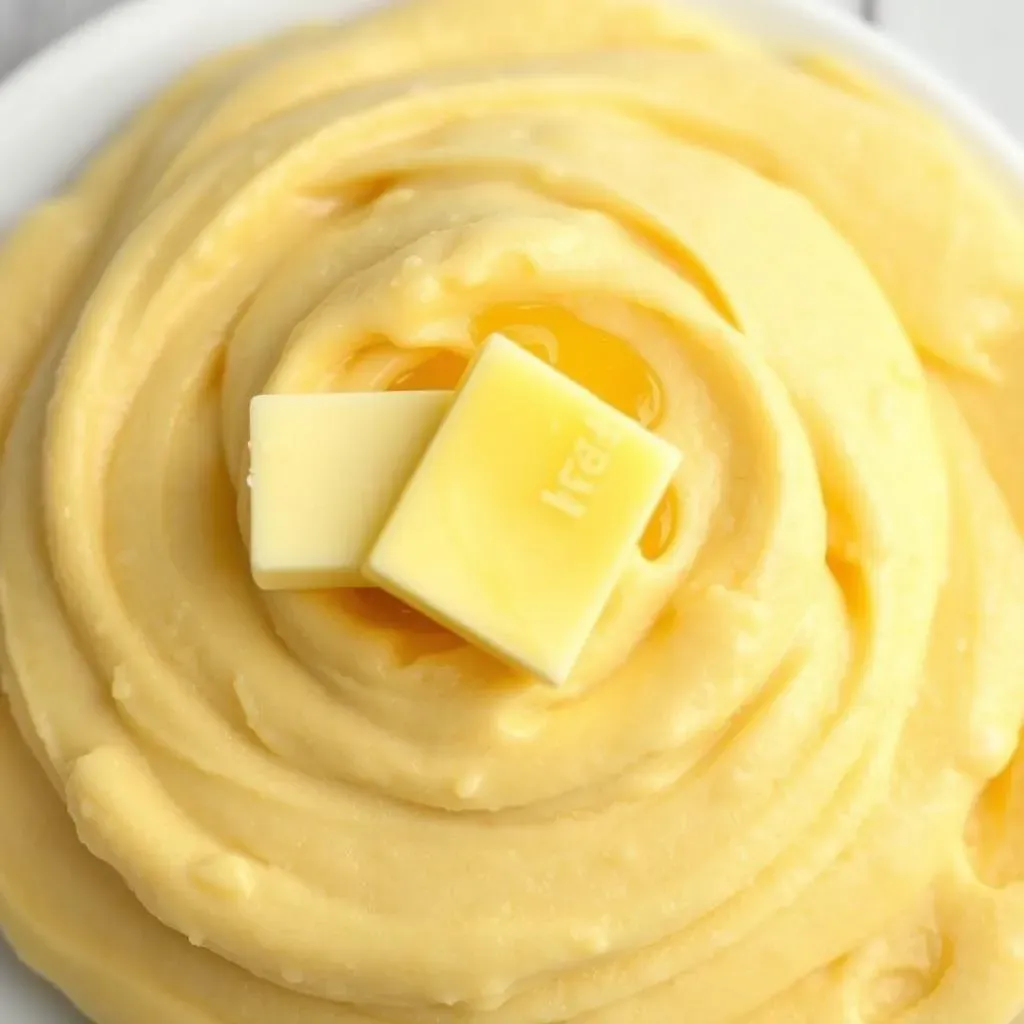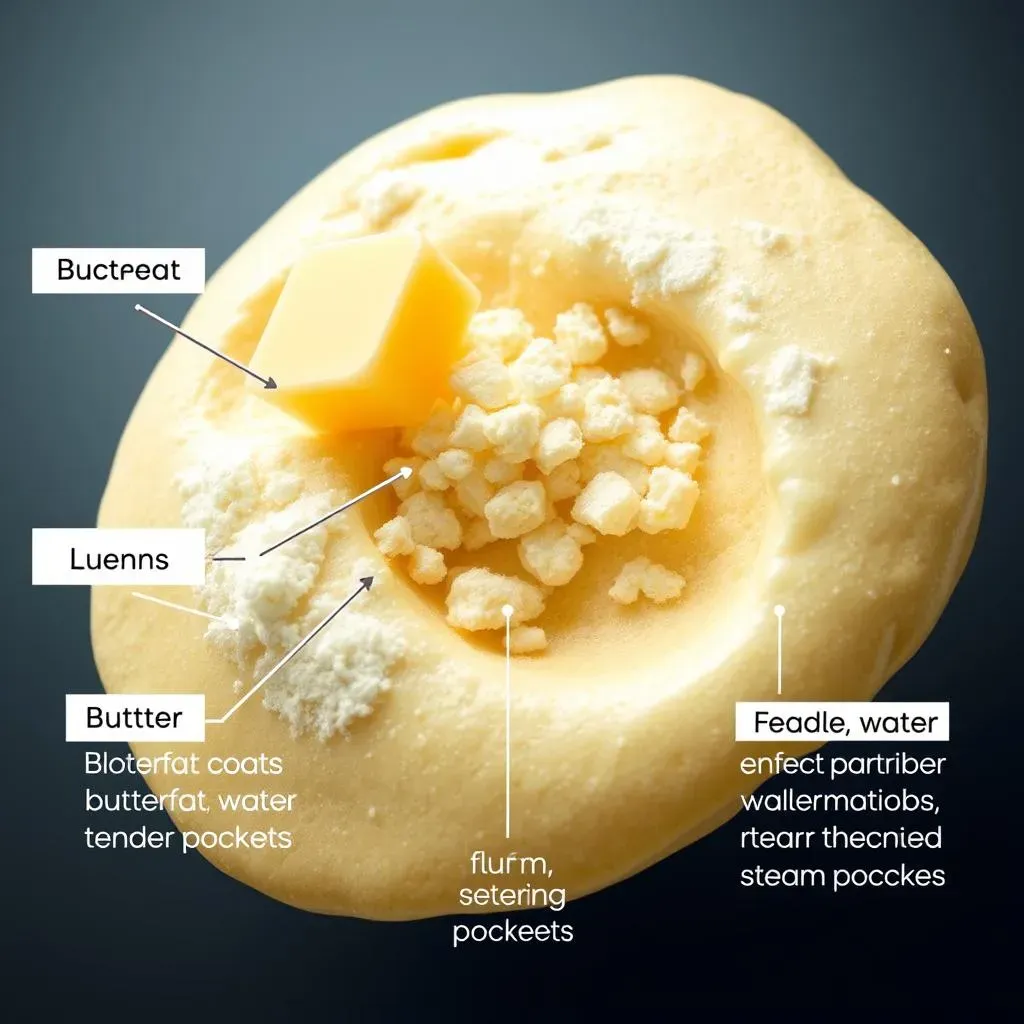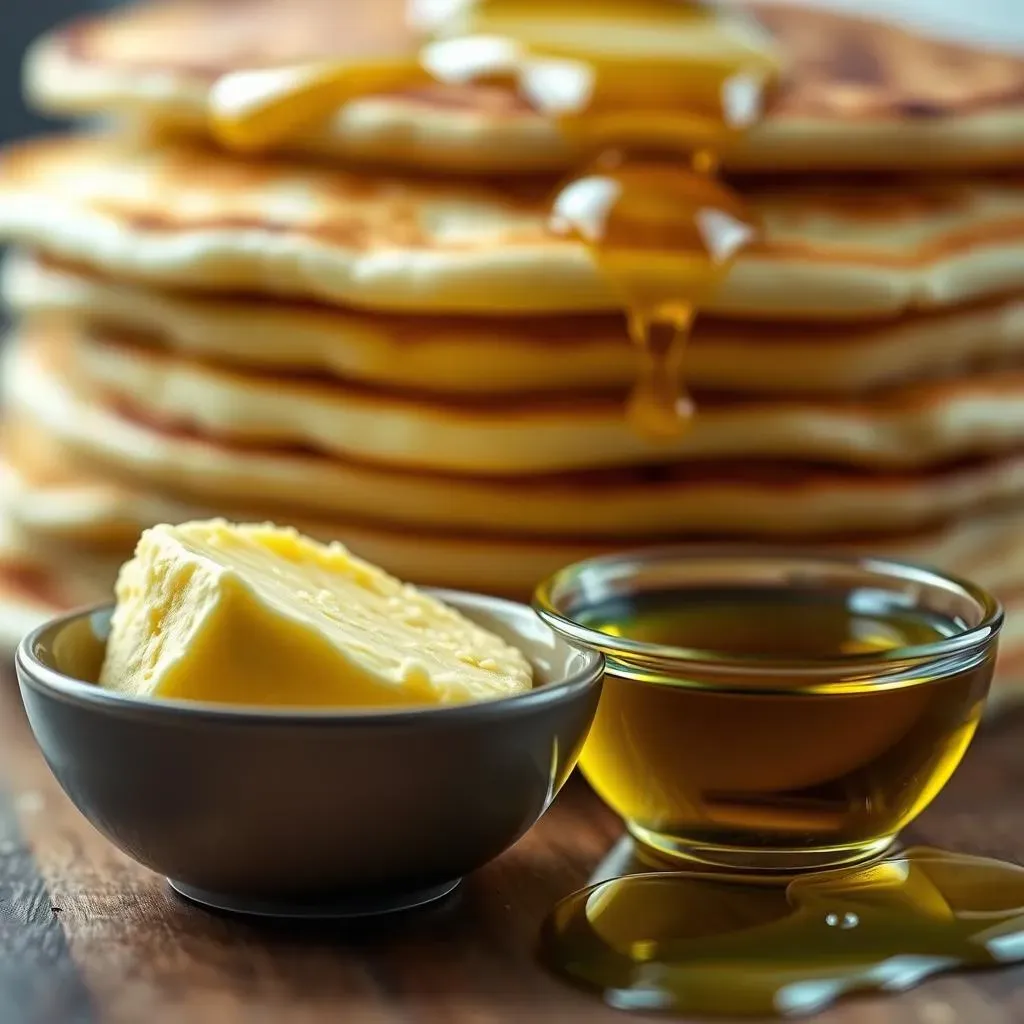Table of Contents
Ever flipped a pancake and wondered, "What does butter do in a pancake recipe, anyway?" It's not just there for a tasty pat on top, you know! We're talking about a secret ingredient that can make or break your breakfast. You might think it's just for flavor, and yes, it does add that rich, yummy taste, but butter's role goes way beyond that. It's about texture, moisture, and even how well your pancakes cook. In this article, I'm going to break down the science and the practical magic of butter in pancake batter. We'll explore how it affects the final product, discuss the differences between butter and other fats like oil, and give you the inside scoop on choosing the best fat for your perfect pancake. So, grab your whisk and let's get cooking—or at least, learning!
Why We Add Butter to Pancake Batter: Beyond Just Flavor

Why We Add Butter to Pancake Batter: Beyond Just Flavor
Okay, so you're diving into the world of pancake batter, huh? Let's get one thing straight: butter isn't just some afterthought you toss in for a bit of extra yum. It's a key player. Sure, it brings that rich, buttery taste that makes your breakfast sing, but it's also doing a whole lot behind the scenes. Think of it like this, butter is the secret agent of your pancake recipe, working hard to make sure everything comes together perfectly. We're talking about more than just flavor here; we're talking about how the pancake behaves.
It's not just about a pat of butter on top of the cooked pancake, it's about getting it into the batter, right from the start. It's like adding a secret ingredient for a science experiment, and the results are quite delicious. It's crazy how much a simple fat like butter can change the game. So, what exactly is butter doing, besides making everything taste better? Well, let's get down to the details.
Butter's Role | Why it Matters |
|---|---|
Flavor | Adds richness and depth |
Texture | Contributes to tenderness |
Browning | Helps achieve that golden-brown color |
The Science Behind Butter in Pancakes: Texture and Moisture

The Science Behind Butter in Pancakes: Texture and Moisture
Butter's Impact on Pancake Texture
Alright, let's get into the nitty-gritty. When you melt butter and mix it into your pancake batter, you're not just adding fat; you're changing how the batter behaves on a molecular level. Butter, being a fat, coats the flour particles, which is super important. This coating prevents the gluten in the flour from developing too much. Now, why is that a big deal? Well, gluten is what makes bread chewy, and we don't want chewy pancakes, do we? We want them tender and fluffy. By hindering gluten development, butter helps create a more delicate, melt-in-your-mouth texture. It's like a tiny, delicious science experiment happening right in your mixing bowl.
Also, think about how butter behaves when it heats up. It melts, right? And that melted butter creates little pockets of steam within the pancake as it cooks. These steam pockets are what make the pancake rise and get light and airy. It's not just the baking powder doing all the work, the butter is a crucial partner in that fluffy rise. So, it's not just about taste, it's about creating the perfect texture, which is why using the right amount of butter can make such a difference. It's almost like the butter is the architect of the perfect pancake texture.
Key Texture Contributors
- Fat Coating: Prevents overdeveloped gluten
- Steam Pockets: Creates a light and airy texture
- Tender Crumb: Ensures a melt-in-your-mouth feel
Butter's Role in Pancake Moisture
Now, let's talk about moisture, because nobody likes a dry, crumbly pancake. Butter plays a key role here, too. The fat in butter helps to keep the pancakes moist by slowing down the evaporation of water during cooking. It's like a little moisture shield. Also, butter is an emulsion, meaning it contains water within the fat. When you cook the pancake, that water turns into steam, further contributing to the moistness and tenderness of the pancake. It's a clever trick, like a tiny built-in humidifier for your breakfast.
Also, the fat in butter helps to prevent the pancakes from becoming tough. A dry pancake is often tough because it has lost too much moisture, and the proteins have become too firm. By keeping the moisture in, butter helps to keep the proteins soft and tender. It’s a balancing act between keeping the moisture in and preventing the pancake from becoming soggy. So, next time you are eating a moist, tender pancake, give a little thanks to the science of butter. It's not magic; it's just good chemistry.
Moisture Retention Factors
Factor | How Butter Helps |
|---|---|
Fat barrier | Slows down water evaporation |
Water content | Creates steam for extra moisture |
Protein softness | Prevents tough, dry pancakes |
Butter vs. Oil: Choosing the Right Fat for Your Pancakes

Butter vs. Oil: Choosing the Right Fat for Your Pancakes
The Flavor Showdown: Butter vs. Oil
Alright, so we've talked about why butter is so awesome in pancakes. But what about oil? Is it just a backup dancer, or does it have its own moves? Well, when it comes to flavor, butter is usually the star of the show. It brings a richness and a depth that oil just can't match. Think of it like this: butter is like that cozy, warm blanket you want on a chilly morning, while oil is more like a practical, efficient windbreaker. Oil is more neutral in taste, meaning it doesn't add much of its own flavor to the pancake. This can be a good thing if you want the other ingredients in your recipe to really shine. But if you're looking for that classic, buttery taste, then butter is the only way to go. It's like choosing between a black and white movie or a color one, both can be good but they give different feelings and taste.
However, don't count out oil just yet. Its neutrality can be a real advantage in certain situations. For example, if you're making pancakes with lots of other flavorful ingredients, like chocolate chips or blueberries, oil might be a better choice because it won't compete with those flavors. It's all about balance, like a well-tuned band, where all the instruments play their part without stepping on each other's toes. It's about understanding what you want from your pancake and choosing the fat that helps you achieve that goal.
Fat | Flavor Profile | Best Use |
|---|---|---|
Butter | Rich, Buttery | Classic pancakes, when you want that distinct buttery taste |
Oil | Neutral | Pancakes with other strong flavors, when you want other ingredients to stand out |
The Texture Tussle: How Fats Affect the Feel
Now, let's talk about texture. Butter, as we’ve discussed, does a fantastic job of creating a tender, moist pancake. The way it coats the flour and creates steam pockets is like a magic trick for your mouth. Oil, on the other hand, can also create a nice texture, but it's often a bit different. It tends to make pancakes a little more crispy on the edges, rather than that super soft, melt-in-your-mouth feel that butter gives. It’s like choosing between a fluffy cloud and a light, crispy wafer. Both are great but different.
The difference comes down to the fat composition. Butter has a mix of fats and water, which helps with the steam pockets and the overall tenderness. Oil, being pure fat, doesn't have that water component, so it doesn't create the same kind of steam. It's like comparing a sponge with a thin layer of oil, one will hold more water, and the other won't. It's not that oil makes bad pancakes; it's just that it makes a different kind of pancake. If you like a slight crispness, oil can be a good choice. If you're all about that soft, fluffy texture, then butter is your best bet. It's all about personal preference, what you like in your mouth.
The Practical Side: Cooking with Butter vs. Oil
Finally, let's get practical. When it comes to cooking pancakes, both butter and oil have their quirks. Butter can burn easily if the pan is too hot, which can give your pancakes an unpleasant, bitter taste. It’s like trying to start a campfire with too much fuel, it can get out of control real quick. Oil, on the other hand, usually has a higher smoke point, meaning it can handle higher temperatures without burning. This can make it a little easier to work with if you're new to pancake making. It's like having a more forgiving tool in your kitchen.
Also, consider how the fat behaves in the pan. Butter, when melted, tends to spread out evenly, which can help your pancakes cook evenly. Oil can sometimes pool in certain areas, which might lead to uneven cooking. It's like painting a wall, sometimes you need to apply more paint in one spot than another to get an even finish. So, when choosing between butter and oil, think about how they will behave in your pan and what kind of cooking experience you prefer. It's not just about taste and texture; it's also about how easy it is to work with. Ultimately, the best choice depends on your personal preferences and what kind of pancakes you're trying to create. It's like a chef choosing the right pan for the right dish, each one has its own purpose.
Cooking Considerations
- Smoke Point: Oil handles higher heat, butter burns easily
- Even Cooking: Butter spreads well, oil can pool
- Ease of Use: Oil is more forgiving for beginners
Wrapping Up Butter's Role in Pancakes
So, what have we learned about butter in pancake recipes? It's more than just a flavor booster; it's a key player in creating the perfect texture and moisture. Whether you're a butter purist or an oil enthusiast, understanding how fat affects your pancakes is crucial. Experiment with different amounts and types to find your ideal balance. Don't be afraid to tweak recipes and see what works best for your taste buds. Ultimately, the best pancake is the one you enjoy the most, and knowing the secret role of butter is just another step to mastering your breakfast game.